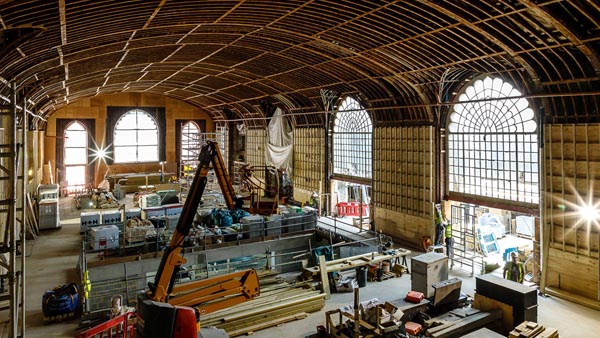R Durtnell & Sons Ltd, the contractor working on the major refurbishment of Brighton Dome Corn Exchange and Studio Theatre, has ceased trading.

BRIGHTON & Hove City Council who own the land and the freehold of the buildings has taken back the site, made it secure and say they are committed to completing the refurbishment of these buildings in the cultural heart of the city.
Over the coming days the council will be exploring practical options for continuing and completing these essential restoration works and taking forward the wider Royal Pavilion Estate project.
Royal Pavilion Estate includes the Royal Pavilion, Brighton Museum & Art Gallery, Royal Pavilion Garden, Brighton Dome Concert Hall, Corn Exchange and Studio Theatre.
The Brighton Dome Corn Exchange and Studio Theatre refurbishment is the first phase of a wider project to re-affirm Brighton’s Royal Pavilion Estate as a key cultural destination by equipping it for a sustainable future.
Longer-term plans are to reunite the historic Estate created by George IV in the early 19th century to create a centre for heritage, culture and the performing arts which reflects the unique spirit of Brighton.
It is anticipated that the revitalised Royal Pavilion Estate will support 1,241 FTE jobs and have an economic impact of up to £68m.
The refurbishment will transform the Grade 1 listed Brighton Dome Corn Exchange, formerly the Prince Regent’s Riding House, which has the widest span timber frame roof in the country, and the Grade 2 listed Studio Theatre.
The project will restore previously hidden heritage features as well as provide increased capacity seating, a new viewing gallery and a creative space for artists to rehearse and develop work.
Major improvements to the Studio Theatre – once a supper room – will include balcony seating, new bar facilities and a street level café opening out onto New Road.
Since construction work began in February 2017, the project has experienced several unforeseen issues on the historic site. A Quaker burial ground was uncovered in August 2017, with human remains excavated by a team of archaeologists and structural issues have been discovered with the Corn Exchange’s 200-year old wooden frame and roof trusses.
The £22 million project includes principle funding from Arts Council England (£5.8m), National Lottery Heritage Fund (£4.9m), as well as significant commitments from Coast to Capital and Brighton & Hove City Council.
Major support from private contributions includes a number of charitable trusts and foundations and individual donors. A robust fundraising strategy is focused on a network of individuals, sponsors and trusts to meet the remaining costs. This includes a community campaign and a seat appeal, to garner support from the public. The Build Brighton Dome community appeal has secured over £130,000 so far and each pound is match funded by The Roddick Foundation.

















You must be logged in to post a comment.